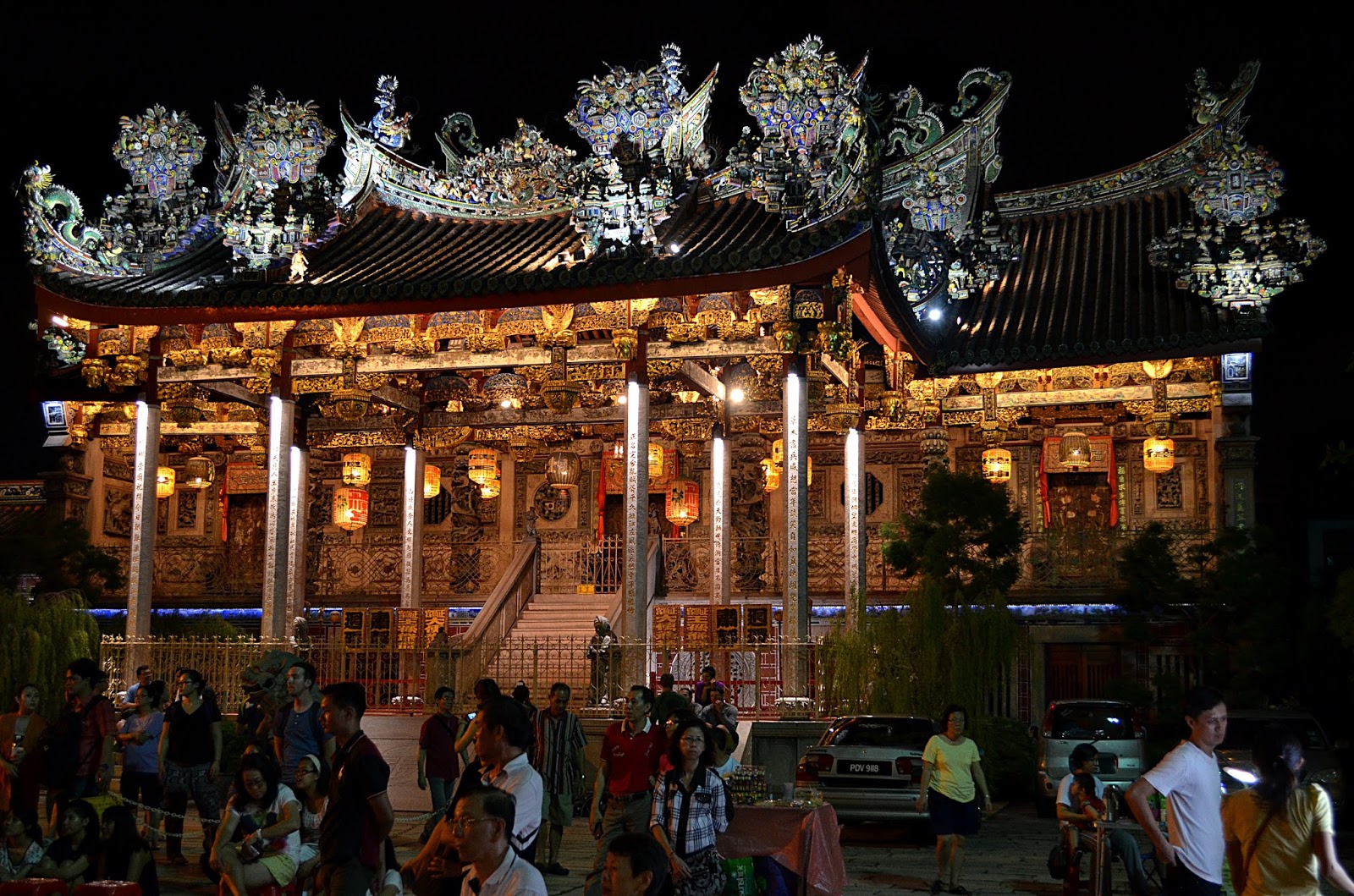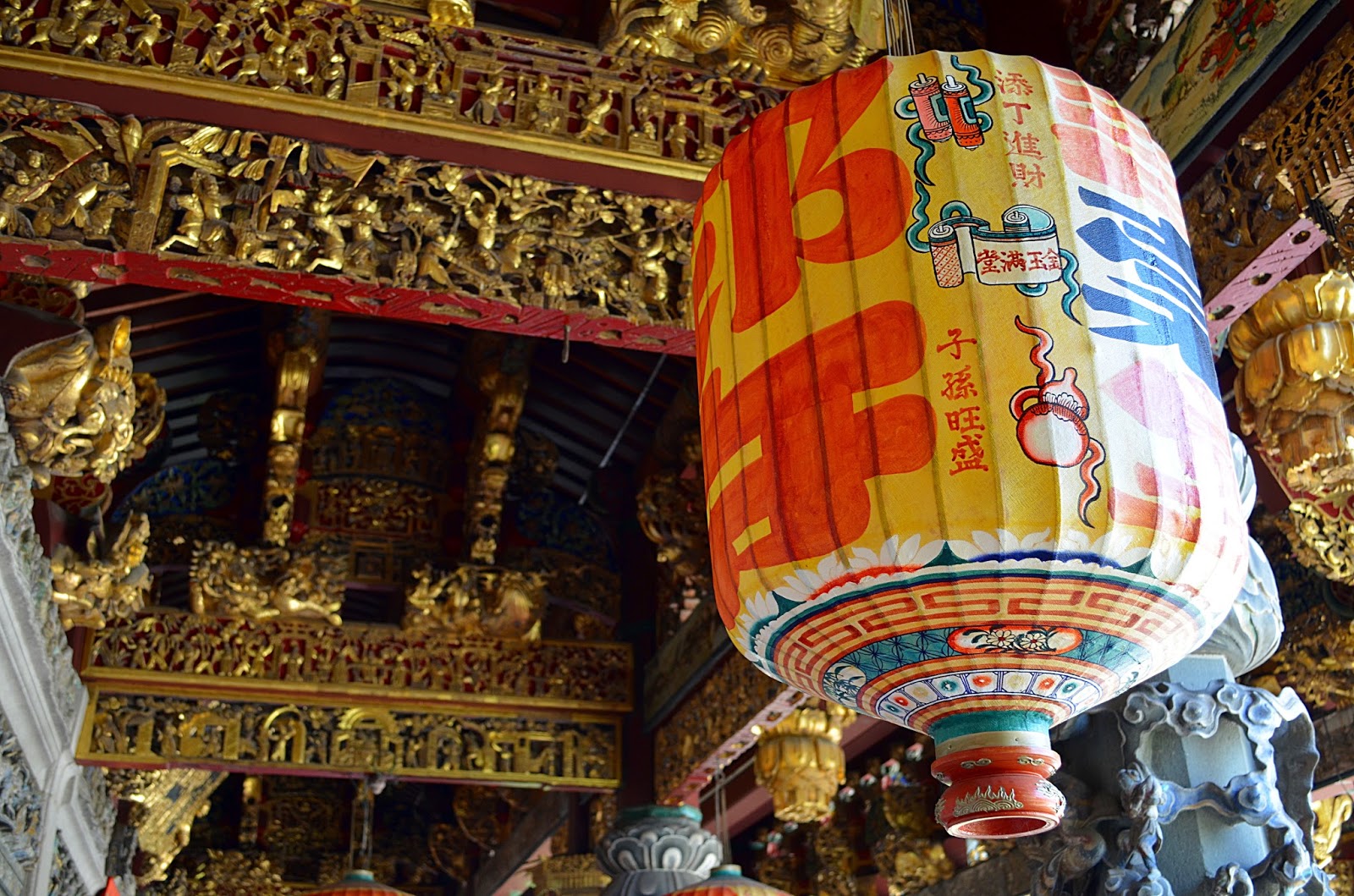Destination: Penang (Malaysia)
Located in the northwest corner of Malaysia, Penang has long been a favorite destination for Singaporeans. With its rich heritage of Malay, Chinese, and European cultures, it has retained this vibrant diversity. The island also boasts of some of the best food in Asia, with a smorgasbord of specialities that attract visitors from far and wide.
George Town, UNESCO Heritage Site
George Town, UNESCO Heritage Site
George Town, the capital of the state of Penang, was named a UNESCO heritage site in 2007. It developed its own distinct culture as the result of the influx of foreigners from shipping and trading practices over the past 500 years. Today, the local government has done an excellent job in capturing this spirit, gazetting much of the town for preservation. Here's a quick rundown of some of the highlights. Be sure to check out my post on the street art of Penang, much of which is located in George Town.
Khoo Kongsi, short for Leong San Tong Khoo Kongsi, is the pre-eminent temple in Penang. The complex consists of many buildings surrounding a courtyard. The main building is Leong San Tong, shown above (and in the first photo of the post). The magnificent clanhouse sits across from a small theatre where various performances are held for the local people.
This is an visually stunning piece of architecture, and is perhaps the highlight of the entire George Town area. The family traces back their lineage 650 years, and one can follow their history through some helpful exhibits located on the ground floor, below the temple.
When one stick emerged, its validity must be confirmed. This is done by tossing two jiaobei blocks, which are located in front of the kneeling support in the picture below. For the fortune to be legitimate, the jiaobei blocks must land with one round side up, one flat side down. If not, the praying person must start over. If the two blocks land flat side up, it is said that the deities are laughing at the human.
Finally, with the successful stick in hand, the devotee approaches a designated individual within the temple. This person then consults a book, poem, or self-consults and reveals the meaning of the fortune.
Khoo Kongsi
This is an visually stunning piece of architecture, and is perhaps the highlight of the entire George Town area. The family traces back their lineage 650 years, and one can follow their history through some helpful exhibits located on the ground floor, below the temple.
Kuan Ying Teng Temple (or Kong Hock Keong Temple)
The Kuan Yin Teng Temple, known as the Goddess of Mercy Temple, is located in the heart of Georgetown. It has been around for hundreds of years, and saw action during WWII as a shelter for the local Penang population.
While visiting, I watched a woman performing kau cim, an ancient fortune telling practice. As seen below, she kneels in front of the altar, asks the deity for her request, and vigorously shakes her 簽筒 (cim bucket), which contains up to 100 簽 (kau cim sticks). These bamboo sticks have unique numbers written on each one, and after shaking for a bit one stick flies out and lands in front of the devotee. If multiple sticks come out, which happened a few times, the process must be repeated.
Finally, with the successful stick in hand, the devotee approaches a designated individual within the temple. This person then consults a book, poem, or self-consults and reveals the meaning of the fortune.
Masjid Kapitan Kling
The Kapitan Kling mosque is a beautiful building located within historic George Town. However, we arrived at a poor time, as midday prayers were in session, and we could not enter inside. And most of our group were not wearing the appropriate attire either. Nonetheless, it was nice to see (the leading religion of Malaysia) contrasted with the many Chinese and Christian places of worship (historically strong influences over the past 200+ years).
The Kapitan Kling mosque is a beautiful building located within historic George Town. However, we arrived at a poor time, as midday prayers were in session, and we could not enter inside. And most of our group were not wearing the appropriate attire either. Nonetheless, it was nice to see (the leading religion of Malaysia) contrasted with the many Chinese and Christian places of worship (historically strong influences over the past 200+ years).
Kek Lo Si Temple
We were told that this is the largest Buddhist temple in Southeast Asia; however, I had also been told that Borobodur in Indonesia holds this title. Either way, Compare the above picture to the one of the dvarapala ("gate guardian") directly below. This is one massive statue; at 30 meters tall, the deity Kuan Yin looms large over the valley beneath. The pavilion was recently constructed in 2002.
The grounds were lovely to walk around, and provided sweeping views of the surrounding hills. Souvenir shops dotted the area, though the number of tourists was fairly low. It is said to become quite packed during festivals, especially in the days leading up to Chinese New Year in January each year.
The grounds were lovely to walk around, and provided sweeping views of the surrounding hills. Souvenir shops dotted the area, though the number of tourists was fairly low. It is said to become quite packed during festivals, especially in the days leading up to Chinese New Year in January each year.
This building show in the photo above is really fascinating. It has architectural elements from three distinct cultures. The base in Chinese, the middle portion is Thai, with a Burmese-style crown. Thus, the Buddhism at this site is shown to be encompassing of various traditions, namely Mahayana and Theravada Buddhism. And it looks really cool too.
Monkey Beach
On Sunday, we took a break from the traditional sightseeing and hit the water along Penang's northern coastline. After making the 20-30 minute ride to our destination, everyone tried his or her hand at some fishing. Most of the catches were either puffer fish or poisonous catfish, both of which the guide would promptly toss back into the water.
While waiting for lunch, I ventured off the beach onto a remote path through the woods. It eventually led to the lighthouse at Muka Head, providing a spectacular view of the coast and surrounding water. It took about 45 minutes each way, With monkeys chattering in the trees and ants scuttling along the path.
Special thanks to my Malaysian friend who made all of this happen. She and her family were incredibly gracious in hosting us and ferrying us around the island. It clearly enhanced the trip, as we experienced the true local flavor of Penang.
I want to return, mainly to explore the Peranakan culture further. They have perhaps the best Peranakan museum in the world, as well as the Cheong Fatt Tze Mansion, one of the most famous great houses in the world. Malaysian road trip, anyone?
I want to return, mainly to explore the Peranakan culture further. They have perhaps the best Peranakan museum in the world, as well as the Cheong Fatt Tze Mansion, one of the most famous great houses in the world. Malaysian road trip, anyone?














Comments
Post a Comment